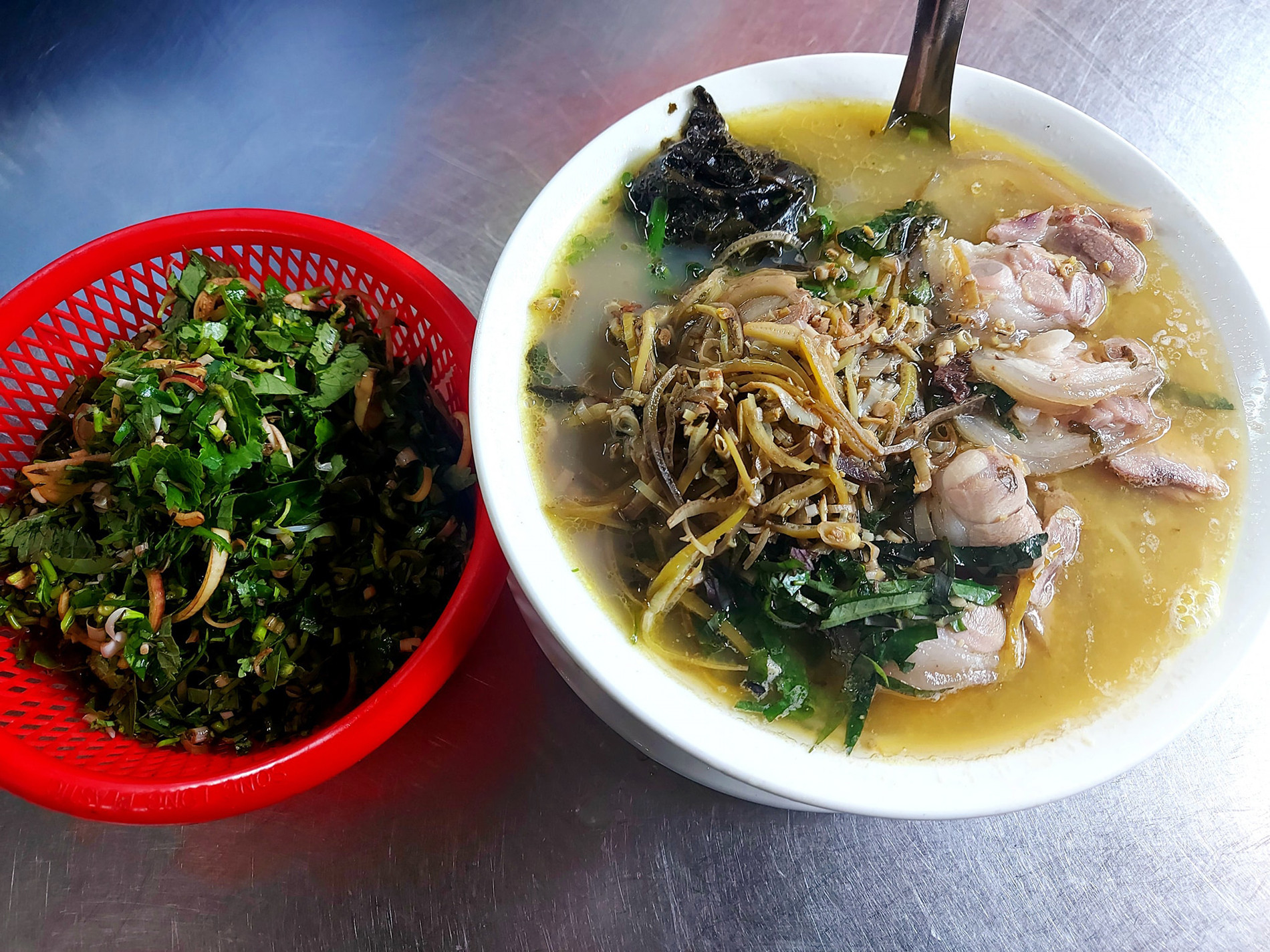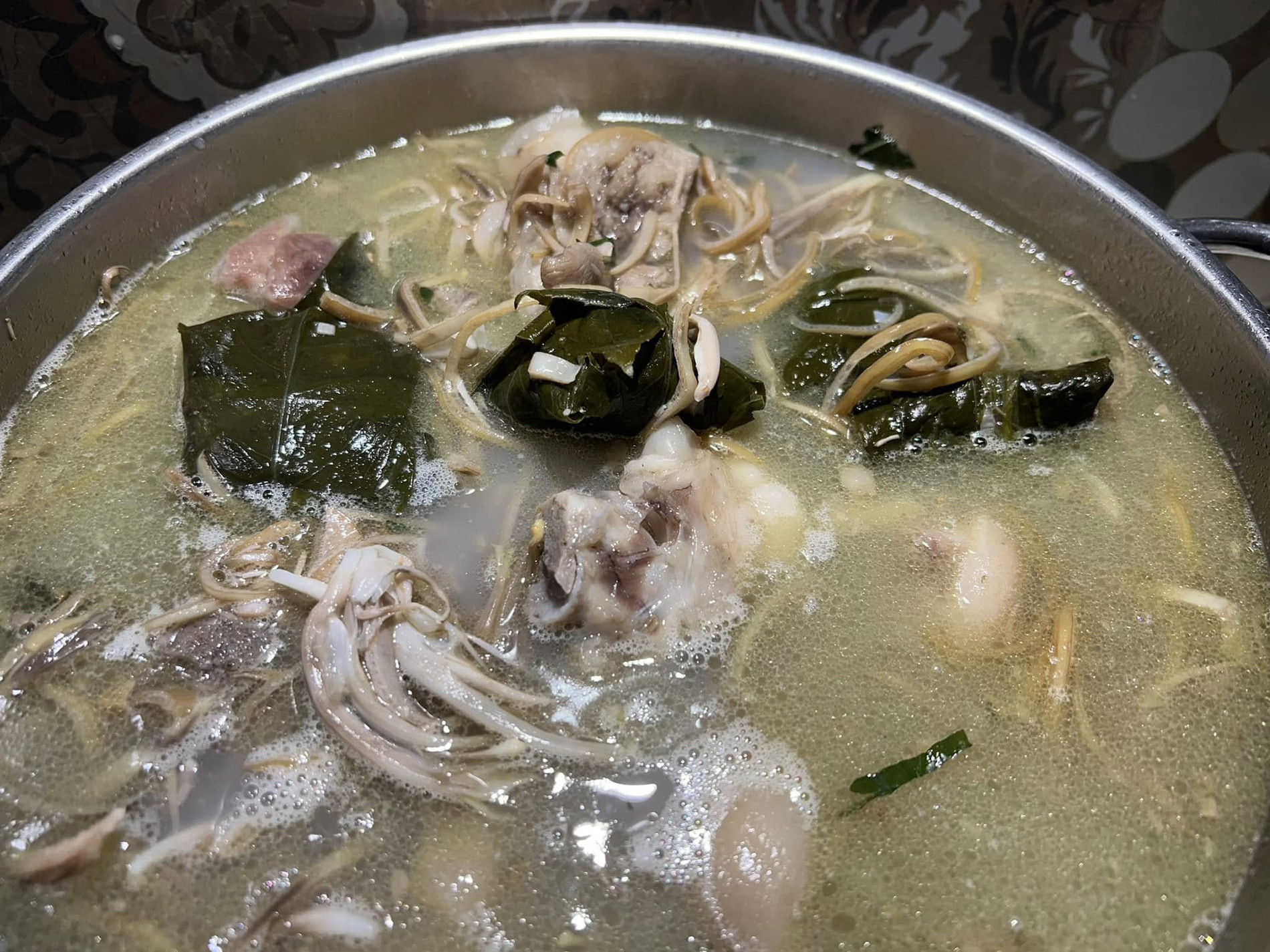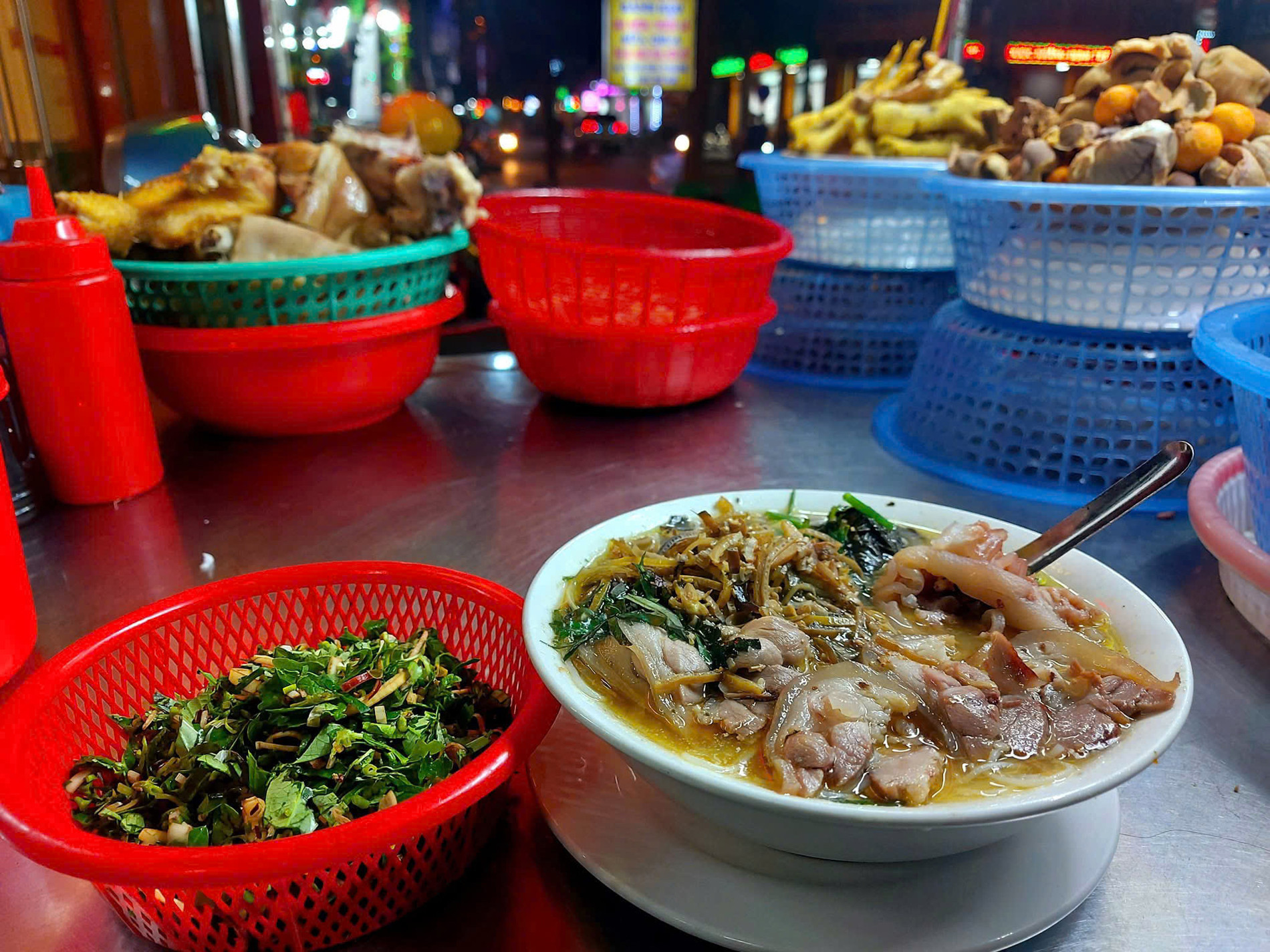Prepared with simple, rustic ingredients, bun bung from Thai Binh captivates food lovers with its unique taste, combining the natural sweetness of bone broth with the slight astringency of fresh banana blossoms.
This dish is a hallmark of Thai Binh's culinary tradition. The name bun bung - a playful term - comes from the cooking method, where ingredients are simmered until they fully expand and soften.
Locals compare bun bung to dishes like bun moc (pork sausage noodle soup) or bun doc mung (taro stem noodle soup) found in northern provinces. However, what sets Thai Binh’s bun bung apart is the addition of two special ingredients: fresh banana blossoms and cha xuong song (meat wrapped in Indian pennywort leaves).
A unique preparation process

According to Bui Thoa, a noodle soup vendor in Thai Binh City, creating authentic bun bung requires careful selection and preparation of ingredients.
The broth, a cornerstone of the dish, is made by simmering pork bones. Cleaned pork trotters and leg meat are briefly blanched in boiling water before being added to the pot. The bones are simmered over low heat for an extended period to extract their natural sweetness, while the meat is cooked until tender and then soaked in ice water to retain its crunch and whiteness.
Fresh banana blossoms are thinly sliced and immediately soaked in rice water or diluted lemon or vinegar water to prevent browning and reduce bitterness. After soaking for 30–40 minutes, the banana blossoms are rinsed and drained.
They are then stir-fried with tomatoes, seasoned to taste, and added to the broth. The mixture is simmered until the banana blossoms are tender, creating a distinctive cloudy broth as their natural resin is released.
The essence of cha xuong song


Another defining element of bun bung is cha xuong song. This ingredient is made by mixing ground pork with julienned wood ear mushrooms, seasoning the mixture, and wrapping it carefully in Indian pennywort leaves.
Thoa emphasizes that the choice of leaves is crucial for flavor. While some opt to wrap the filling in a layer of betel leaves and then pennywort, others use pennywort alone. In summer, alternatives like gourd leaves may be used, though they lack the same aroma.
To prepare, the wrapped meat is typically seared briefly before being simmered in the broth to enhance its appearance and texture.
A sensory delight

When serving, vendors assemble a bowl with rice noodles, pork trotters, leg meat, cha xuong song, and a sprinkle of fresh herbs like scallions and coriander. They then ladle over the hot, fragrant broth with banana blossoms.
According to Thoa, the hallmark of a perfect bun bung lies in its cloudy, aromatic broth - infused with the essence of pennywort leaves - and its harmonious combination of sweet, savory, and mildly astringent flavors.
Diners often pair the dish with mixed greens, including lettuce, shredded water spinach, basil, perilla, and thinly sliced banana blossoms.
This rustic dish is available at local eateries and traditional markets in Thai Binh for about 25,000–30,000 VND ($1–1.20 USD) per bowl.
Nhat Ha, a Thai Binh native, describes bun bung as a light yet satisfying dish, ideal for any meal or season.
“The broth has a natural sweetness from the bones, complemented by the nuttiness and mild bitterness of the banana blossoms and the aroma of cha xuong song,” Ha shared.
She added that it is particularly enjoyable during the cold winter months, where its warmth and comforting flavors shine.
“Whenever I visit Thai Binh, bun bung is always my first meal. It’s so good that I often eat two bowls in one sitting without feeling too full.
For visitors, this dish is a must-try when exploring the culinary gems of my hometown,” Ha expressed.
Thao Trinh
Photos by Nhat Ha